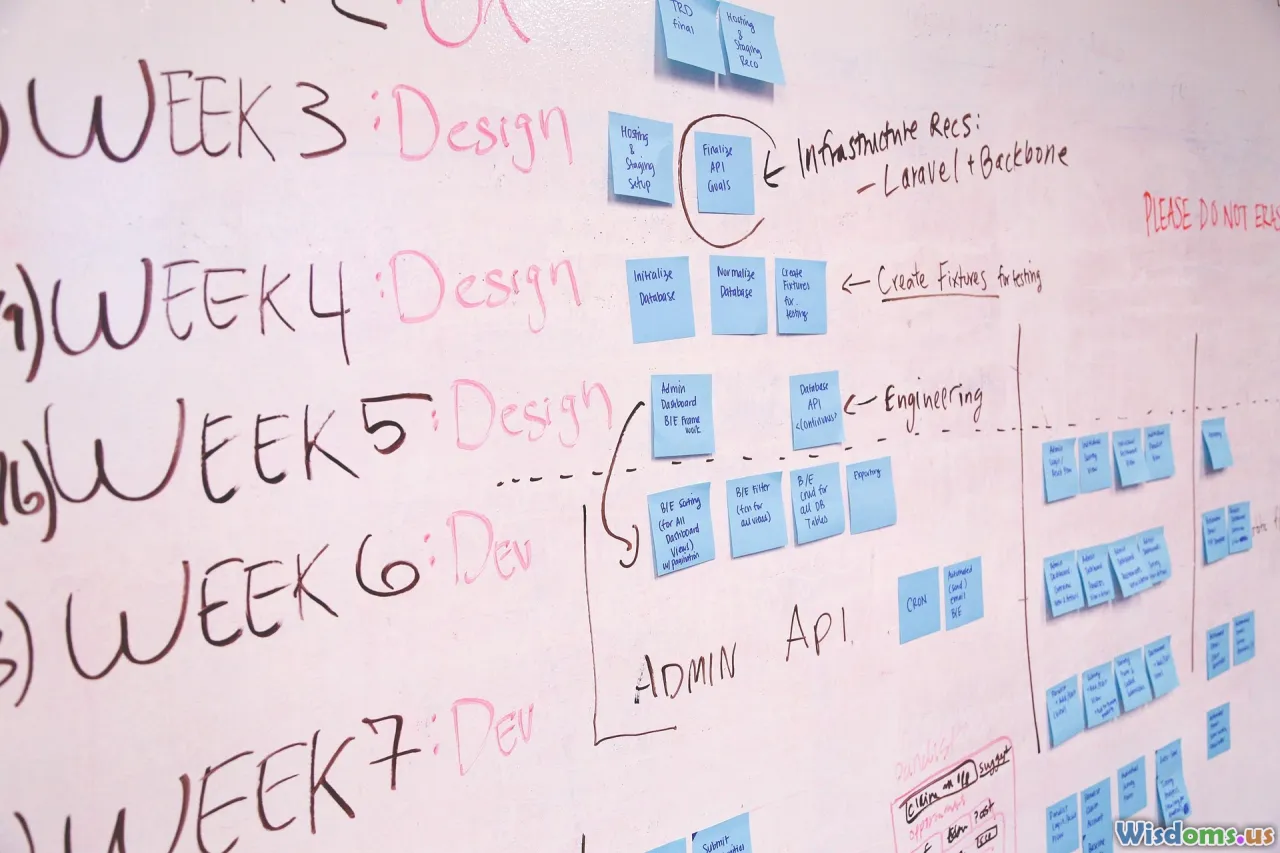
How Decision Trees Simplify Classification Problems in Data Science
21 min read Explore how decision trees streamline classification tasks, making complex data science problems both accessible and interpretable. (0 Reviews)
How Decision Trees Simplify Classification Problems in Data Science
Throughout the history of data science, practitioners have wrestled with the challenge of transforming vast, messy datasets into clear, actionable insights. Classification, assigning categories to data points, lies at the heart of this challenge. Yet, while complex statistical models may offer formidable predictive power, one family of models remains beloved for its transparency, robustness, and accessibility: decision trees. This article dives deep into the world of decision trees, illuminating how they simplify and elevate classification tasks in the modern data science toolkit.
Decoding Decision Trees: Simple Structure, Powerful Outcomes

At their core, decision trees mimic the flowchart logic we’re all familiar with: a series of questions that guide you toward a specific outcome. But under their straightforward surface lies considerable analytical power.
A decision tree is, quite literally, a tree-shaped model: each node represents a test on an attribute, each branch indicates an outcome of the test, and each leaf node denotes a class label (the decision). For example, imagine trying to classify whether an animal is a ‘cat’ or ‘dog’ based on traits like ear shape, tail length, and bark/meow frequency. The tree sequentially asks about these features until it lands on a clear categorization.
This structure offers an important practical advantage: humans can understand not just the final decisions but also the reasoning process behind each one. In a field often bogged down by 'black box' neural networks and complex ensembles, decision trees shine with their transparency and interpretability.
Real-World Classification Made Elegant

Consider the banking sector, where understanding why a loan applicant was granted or denied approval is critical, both for regulatory reasons and customer relationship management. Decision trees provide succinct, reproducible rules that domain experts and auditors alike can follow.
Example: Credit Risk Assessment
A bank uses a decision tree to evaluate applicants. The branching might look like:
- Income > $50,000?
- Yes → Proceed to employment history
- No → Check for collateral
- Employment History > 3 years?
- Yes → Approve
- No → Deny
Such logic doesn't require advanced mathematical literacy to interpret. Unlike models that provide just a risk score, every step of the process can be queried, explained, and adjusted. This lends enormous value in regulated industries.
Other domains frequently relying on decision trees include:
- Healthcare: Diagnosis based on symptoms and test results
- Marketing: Segmentation based on responses to past campaigns
One of the classic datasets used to study decision trees in action is the UCI Machine Learning Repository’s Iris dataset—the tree splits the data based on petal and sepal measurements to precisely classify flower species.
The Tree-Growing Process: From Root to Leaf

Understanding how a decision tree learns from data is key to appreciating its practicality. The basic process involves recursively segmenting the dataset into increasingly homogeneous groups (i.e., groups that share the same class label).
The tree-building algorithm typically follows these steps:
- Select the best attribute to split the dataset using metrics like Gini impurity or information gain. This measures how well an attribute divides the dataset into distinct classes.
- Create a branch for each possible outcome of the attribute.
- Split the dataset into subsets based on attribute values.
- Repeat steps 1-3 on each branch until either:
- Every branch contains data points that belong to the same class;
- Predefined stopping rules (like maximum tree depth or minimum number of samples at a node) apply.
Popular criteria used during tree construction include:
- Information Gain (from entropy): Popularized by ID3 and C4.5 algorithms.
- Gini Impurity: Common in CART (Classification and Regression Trees).
- Chi-square: For categorical data splits.
Concrete Example: Gini Impurity in Action
Suppose you’re working on a dataset of employees and want to predict whether they will accept a counter-offer after resigning. You must choose which attribute to split the data first – years at company, or satisfaction rating? Gini impurity helps you quantify which feature separation will make resultant groups class-pure more efficiently.
Why Simplicity Matters: Interpretability vs. Accuracy Trade-Off

A common critique of decision trees is that they’re "too simple" compared to methods like support vector machines or deep learning. Yet simplicity is, in many cases, an asset.
Interpretability Boosts Stakeholder Trust
When presenting model recommendations to stakeholders, your reasoning must be defensible. Decision trees allow you to translate algorithmic decisions into straightforward human language: “We approve this claim because their prior record is clean and transaction amount is moderate.”
Diagnosing Model Missteps
Everything about a tree model is visible. If a tree makes systematic misclassifications (e.g., categorizing all elderly patients as high-risk no matter their actual health), you can spot the flawed branch and either prune or retrain it.
Speed in Training and Scoring
Decision trees train fast. They require no tuning of weights, benefit from quick calculations, and can be implemented on massive datasets. This makes them well-suited for scenarios where a model needs to be updated continually as new data comes in, or when rapid prototyping is key.
But simplicity sometimes comes at the cost of accuracy, especially on complex datasets with intricate patterns. That’s where ensemble methods (like random forests) step in—but even they depend upon the solid foundation of individual decision trees.
Top Practical Tips for Building Effective Decision Trees

Decision trees are elegant tools, but a few practical steps ensure they reach their full potential in your classification projects:
1. Preprocess and Engineer Features Thoughtfully
- Categorical to Numeric: Convert non-numeric data to numbers via label encoding or one-hot encoding, since most algorithms operate on numbers.
- Handle Missing Values: Many tree implementations can natively handle missing values, but exploring imputations or categorizations can boost accuracy.
- Feature Scaling: Generally, decision trees don’t need feature scaling. They split based on thresholds, making them robust to differing magnitudes across features.
2. Prune Trees to Tame Overfitting
A common pitfall is growing trees too large; they memorize training data but fail to generalize. Pruning removes unnecessary branches, controlling depth or minimum samples per leaf. Modern APIs (such as min_samples_leaf in scikit-learn) help automatically tune these parameters.
3. Use Cross-Validation to Assess Stability
Rather than relying on a single train-test split, k-fold cross-validation runs many training cycles, each with a different validation fold, giving a more robust estimate of out-of-sample performance.
4. Visualize Your Trees
Visualization tools (e.g., sklearn.tree.plot_tree, Graphviz) can visually display the decision paths. This not only aids debugging but also communicates results to non-technical audiences effectively.
5. Combine Trees for More Power
When a single tree isn’t enough, ensembles—collections of multiple decision trees—unlock greater accuracy and stability. Popular techniques include:
- Bagging: (Bootstrap Aggregating)—randomly samples data to fit many trees and aggregates their votes (e.g., random forests).
- Boosting: sequentially trains trees, where each new tree focuses on the errors made by the previous one (e.g., AdaBoost, XGBoost).
Case Study: Customer Retention in Telecommunications

Telecommunications companies are constantly monitoring customer churn to remain competitive. Predicting which customers are likely to leave—or ‘churn’—is a classic classification problem, ideally suited for decision trees due to the variety of customer features at play (usage patterns, billing history, service complaints, etc.).
Workflow Example
- Prepare Data: Gather data on current and former customers (demographics, last contract duration, usage volume, call drop rate).
- Build Tree: Apply feature selection and train a decision tree on historical churn data.
- Interpret Results: The tree might reveal, for example, that high call drop rates combined with long complaint resolution times are the key churn drivers.
- Take Action: The telecom can proactively reach out to customers at risk—say, those who just experienced repeated dropped calls with no timely resolution—before they defect to competitors.
Here, the clarity of the decision tree gives managers direct insight into which levers drive retention, allowing targeted, data-informed interventions.
Decision Trees vs. Other Classification Algorithms

To appreciate decision trees’ place in the toolkit, consider a comparison with other popular classification methods:
| Model | Interpretability | Performance (complex data) | Training Speed | Feature Engineering Needs |
|---|---|---|---|---|
| Decision Tree | ⭐⭐⭐⭐⭐ | ⭐⭐⭐ | ⭐⭐⭐⭐⭐ | ⭐ |
| Random Forest | ⭐⭐⭐ | ⭐⭐⭐⭐⭐ | ⭐⭐⭐⭐ | ⭐ |
| Logistic Regression | ⭐⭐⭐⭐⭐ | ⭐⭐⭐ | ⭐⭐⭐⭐⭐ | ⭐⭐⭐ |
| SVM | ⭐⭐ | ⭐⭐⭐⭐ | ⭐⭐ | ⭐⭐⭐⭐ |
| Neural Network | ⭐ | ⭐⭐⭐⭐⭐ | ⭐ | ⭐⭐⭐⭐⭐ |
Interpretability shines with decision trees and logistic regression, while neural nets and SVMs often need post-hoc techniques to explain their predictions. Trees don’t require feature scaling and can handle non-linear relationships natively, boosting practical value on tabular data.
Common Pitfalls (and How to Dodge Them)

1. Overly Deep Trees
- Problem: Overfitting, poor generalization to new data.
- Solution: Set maximum depth, prune regularly, and gather more diverse training samples.
2. Irrelevant or Highly Correlated Features
- Problem: Splits may reflect noise, decreasing model stability.
- Solution: Use exploratory data analysis (EDA) and correlation matrices to remove redundant variables before training.
3. Ignoring Class Imbalance
- Problem: Majority class dominates splitting logic, minority cases get overlooked.
- Solution: Employ stratified sampling, class weights, or synthetic sample-generation techniques like SMOTE prior to training.
4. Interpreting Probabilities Naively
- Problem: Predicted probabilities at leaves can be misleading (e.g., small leaf nodes make unstable predictions).
- Solution: Prune aggressively; consider ensembling for more stable probabilities.
Emerging Trends: Explainable AI and Tree-based Innovations

Modern organizations are under growing pressure to explain not just what their models predict, but why. Decision trees, with their straightforward structure, are championed as the gold standard for explainable AI (XAI). Moreover, new developments are stretching their utility further:
- Model Agnostic Explanations: Tools like LIME and SHAP use decision tree surrogates to explain complex model outputs.
- Hybrid Models: Some neural networks now incorporate decision tree logic—combining trees’ reasoning strengths with deep learning’s representational power.
- Oblique Trees: These allow splits on linear combinations of features (rather than a single feature), enhancing flexibility without sacrificing interpretability.
Putting Decision Trees to Work: A Concrete How-To

Let’s walk through a basic workflow implementing a decision tree for a classification task using Python’s popular scikit-learn library:
Step-by-Step Walkthrough
- Prepare the Data
from sklearn.datasets import load_iris from sklearn.model_selection import train_test_split data = load_iris() X_train, X_test, y_train, y_test = train_test_split(data.data, data.target, test_size=0.3, random_state=42) - Instantiate and Fit the Tree
from sklearn.tree import DecisionTreeClassifier clf = DecisionTreeClassifier(max_depth=3, random_state=42) clf.fit(X_train, y_train) - Evaluate Performance
from sklearn.metrics import accuracy_score y_pred = clf.predict(X_test) print(accuracy_score(y_test, y_pred)) - Visualize the Tree
from sklearn import tree import matplotlib.pyplot as plt plt.figure(figsize=(14,8)) tree.plot_tree(clf, filled=True, feature_names=data.feature_names, class_names=data.target_names) plt.show()
This process can be adjusted for any classification dataset, beautifully illustrating not just outcomes but decision logic too.
Why Decision Trees Remain Indispensable in Data Science

While new algorithms capture headlines, decision trees remain an essential engine in data science for good reason: their blend of simplicity, efficiency, and clarity makes them uniquely poised to solve real-world classification problems where trust, audit-ability, and speed matter.
Whether building basic classifiers for tabular data or forming the backbone of state-of-the-art ensembles, decision trees are the logic interpreters of the machine learning world. They convert complexity into clarity and empower practitioners to deliver both accurate predictions and transparent reasoning—a rare and valuable feat in the quest for data-driven excellence.
Armed with these insights, you’re ready to wield decision trees with confidence, unlocking faster workflows, greater stakeholder trust, and outcomes you and your stakeholders can understand—and act upon.
Rate the Post
User Reviews
Popular Posts


















